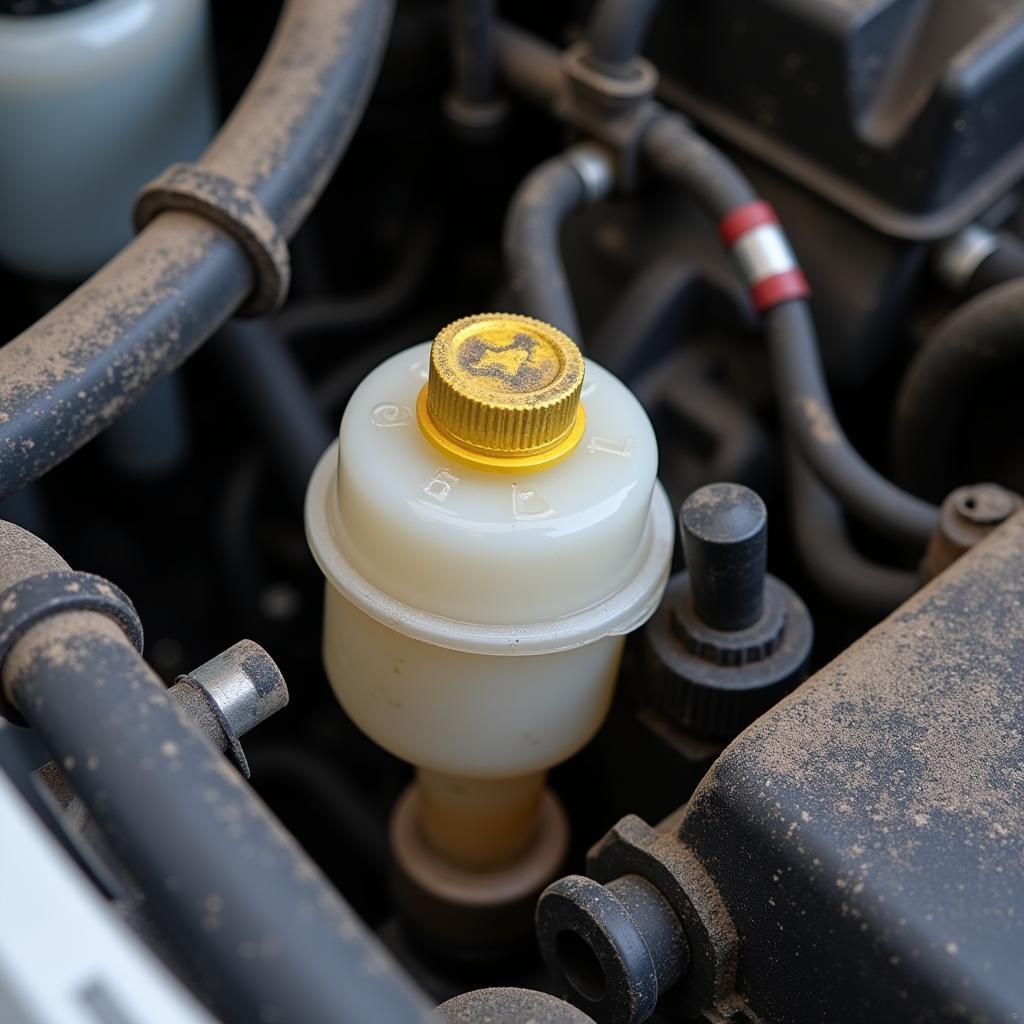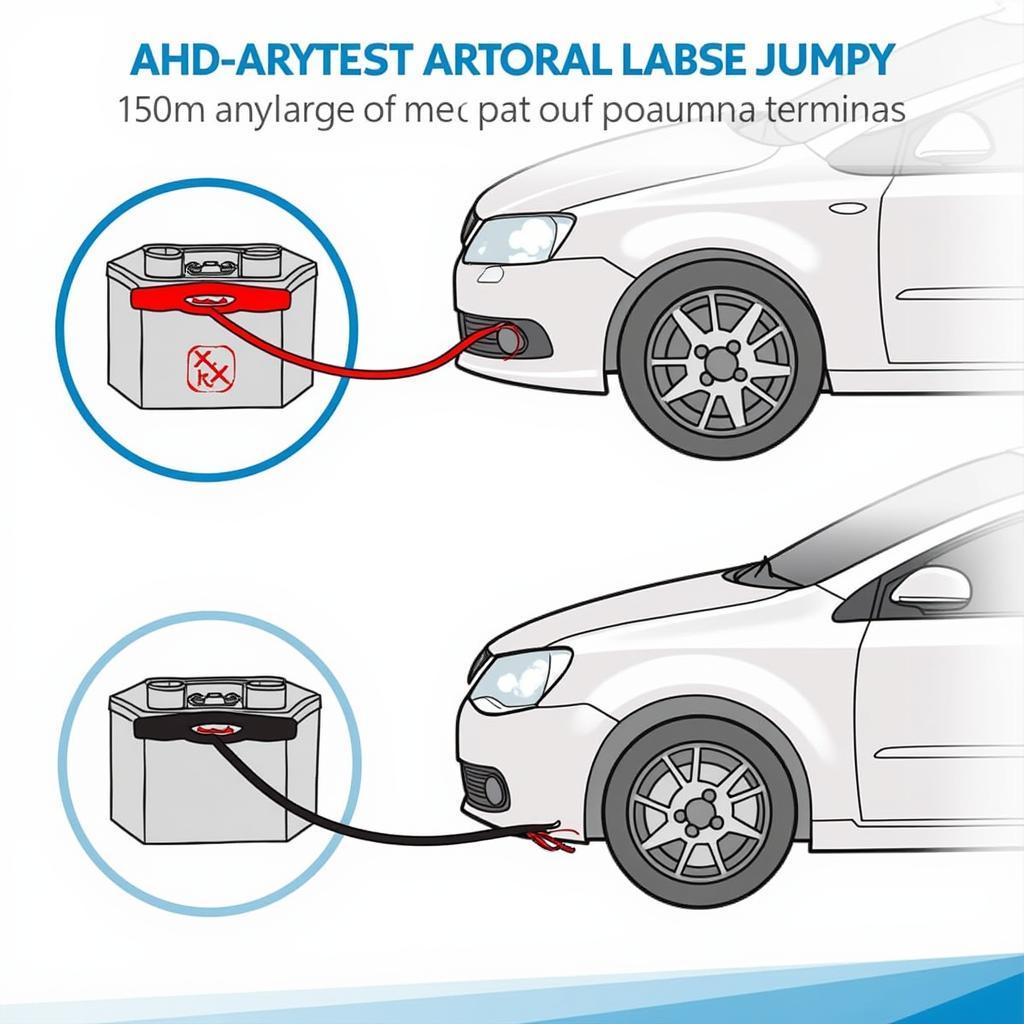A glowing brake warning light on your dashboard is never something to ignore. It signals a potential issue with your vehicle’s braking system, a critical safety component. While it might induce a moment of panic, understanding the common culprits can empower you to address the problem promptly and safely.
Decoding the Brake Warning Light
The brake warning light usually illuminates for one of three main reasons:
- Engaged Parking Brake: This is the simplest scenario. Often, drivers forget to disengage the parking brake fully, triggering the light. A quick check and release should resolve this.
- Low Brake Fluid: Your car needs sufficient brake fluid to function properly. If the level drops too low, it can indicate a leak or worn-out brake pads, both demanding immediate attention.
- Faulty Brake System Component: This can range from worn brake pads and rotors to issues with the ABS system, brake lines, or sensors. Diagnosing the exact component often requires professional expertise.
 Car with low brake fluid level
Car with low brake fluid level
What to Do When Your Brake Warning Light Turns On
1. Don’t Panic: While a serious issue can’t be ruled out, stay calm.
2. Assess the Situation: Is the parking brake engaged? If not, proceed with caution.
3. Find a Safe Spot: Pull over to a safe location as soon as possible. Avoid heavy braking if you suspect a brake system malfunction.
4. Check Your Brake Fluid: If comfortable, carefully inspect the brake fluid reservoir. If the level is significantly low or you see signs of leakage, do not drive further.
5. Seek Professional Help: Contact a qualified mechanic or your dealership for diagnosis and repair. Continuing to drive with a potential brake issue is extremely risky.
Common Causes of Brake Warning Light Illumination
Let’s delve deeper into the common causes behind that unwelcome brake warning light:
1. Worn Brake Pads
Brake pads are your first line of defense when braking. Over time, they wear down due to friction. Most cars have a wear indicator that triggers the brake warning light when the pads reach a critical thickness. Timely replacement ensures optimal braking performance.
2. Brake Fluid Leak
A leak in the brake system can lead to a dangerous drop in brake fluid. This can stem from damaged brake lines, worn seals in the master cylinder, or leaking wheel cylinders. Addressing a brake fluid leak immediately is crucial.
3. Faulty ABS Sensor
Anti-lock Braking System (ABS) sensors monitor wheel speed and help prevent wheel locking during braking. A faulty sensor can disrupt the ABS functionality and trigger the warning light.
4. Malfunctioning Master Cylinder
The master cylinder is the heart of your braking system, converting pedal pressure into hydraulic pressure that activates the brakes. A malfunctioning master cylinder can lead to soft or spongy brakes and illuminate the warning light.
5. Issues with Brake Lines
Brake lines carry the pressurized brake fluid to the wheels. Corrosion, damage, or blockages within these lines can impede fluid flow and compromise braking effectiveness.
“Ignoring a brake warning light is like ignoring a flashing ‘danger’ sign,” says John Miller, a senior automotive technician with over 20 years of experience. “It’s always better to err on the side of caution and have a professional diagnose the issue before it escalates into a serious safety hazard.”
Preventive Measures for a Healthy Braking System
While some brake issues require professional attention, incorporating these preventive measures can promote a healthy braking system:
- Regular Brake Inspections: Adhere to your car manufacturer’s recommended brake inspection schedule.
- Brake Fluid Flush: Brake fluid deteriorates over time. Have it flushed and replaced as recommended in your car’s maintenance schedule.
- Mindful Driving Habits: Avoid aggressive driving that puts excessive stress on your brakes. Coasting to slow down whenever possible can extend the lifespan of your brake pads.
Conclusion
A glowing brake warning light is your car’s way of signaling a potential problem with your brakes. Understanding the common causes and responding appropriately can save you from hazardous situations. Remember, when it comes to your brakes, timely inspection and professional attention are non-negotiable. Ignoring this crucial warning could lead to costly repairs or, worse, compromise your safety on the road.
FAQs
1. Can I drive with the brake warning light on?
It’s highly discouraged. Driving with a potential brake problem is unsafe and can worsen the underlying issue.
2. How much does it cost to fix a brake warning light issue?
The cost varies widely depending on the underlying cause. A simple brake pad replacement is far less expensive than a brake line repair or master cylinder replacement.
3. How often should I check my brake fluid?
It’s a good practice to visually inspect your brake fluid level at least once a month. Refer to your car’s owner manual for specific recommendations.
4. Can a faulty ABS sensor cause the brake warning light to come on?
Yes, a malfunctioning ABS sensor can trigger the brake warning light.
5. Is it safe to add brake fluid myself?
If you’re comfortable, you can top off the brake fluid temporarily. However, it’s crucial to have a professional diagnose the reason for the low fluid level.
6. How long can I drive with worn brake pads?
Driving with worn brake pads is dangerous and can damage your rotors. Replace them as soon as you notice signs of wear or hear a squealing sound while braking.
7. Can extreme temperatures affect my brakes?
Yes, extremely high or low temperatures can impact brake fluid performance and potentially trigger the warning light.


